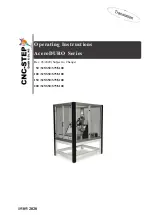
33-26
Cisco ME 3400 Ethernet Access Switch Software Configuration Guide
OL-9639-07
Chapter 33 Configuring QoS
Understanding QoS
Switch(config-pmap)#
class out-class3
Switch(config-pmap-c)#
bandwidth remaining percent 20
Switch(config-pmap-c)#
exit
Switch(config-pmap)#
exit
Switch(config)#
interface gigabitethernet 0/1
Switch(config-if)#
service-policy output policy1
Switch(config-if)#
exit
This example shows how to use the
priority
with
police
commands to configure
out-class1
as the
priority queue, with traffic going to the queue limited to 20000000 bps so that the priority queue will
never use more than that. Traffic above that rate is dropped. The other traffic queues are configured to
use 50 and 20 percent of the bandwidth that is left, as in the previous example.
Switch(config)#
policy-map policy1
Switch(config-pmap)#
class out-class1
Switch(config-pmap-c)#
priority
Switch(config-pmap-c)#
police 200000000
Switch(config-pmap-c)#
exit
Switch(config-pmap)#
class out-class2
Switch(config-pmap-c)#
bandwidth percent 50
Switch(config-pmap-c)#
exit
Switch(config-pmap)#
class out-class3
Switch(config-pmap-c)#
bandwidth percent 20
Switch(config-pmap-c)#
exit
Switch(config-pmap)#
exit
Switch(config)#
interface gigabitethernet 0/1
Switch(config-if)#
service-policy output policy1
Switch(config-if)#
exit
Congestion Avoidance and Queuing
Congestion avoidance uses algorithms such as tail drop to control the number of packets entering the
queuing and scheduling stage to avoid congestion and network bottlenecks. The switch uses weighted
tail drop (WTD) to manage the queue sizes and provide a drop precedence for traffic classifications. You
set the queue size limits depending on the markings of the packets in the queue. Each packet that travels
through the switch can be assigned to a specific queue and threshold. For example, specific DSCP or
CoS values can be mapped to a specific egress queue and threshold.
WTD is implemented on traffic queues to manage the queue size and to provide drop precedences for
different traffic classifications. As a frame enters a particular queue, WTD uses the packet classification
to subject it to different thresholds. If the total destination queue size is greater than the threshold of any
reclassified traffic, the next frame of that traffic is dropped.
Figure 33-7
shows an example of WTD operating on a queue of 1000 frames. Three drop percentages
are configured: 40 percent (400 frames), 60 percent (600 frames), and 100 percent (1000 frames). These
percentages mean that traffic reclassified to the 40-percent threshold is dropped when the queue depth
exceeds 400 frames, traffic reclassified to 60 percent is dropped when the queue depth exceeds 600
frames, and traffic up to 400 frames can be queued at the 40-percent threshold, up to 600 frames at the
60-percent threshold, and up to 1000 frames at the 100-percent threshold.
Содержание ME 3400 Series
Страница 40: ...Contents xl Cisco ME 3400 Ethernet Access Switch Software Configuration Guide OL 9639 07 ...
Страница 44: ...xliv Cisco ME 3400 Ethernet Access Switch Software Configuration Guide OL 9639 07 Preface ...
Страница 1138: ...Index IN 52 Cisco ME 3400 Ethernet Access Switch Software Configuration Guide OL 9639 07 ...
















































